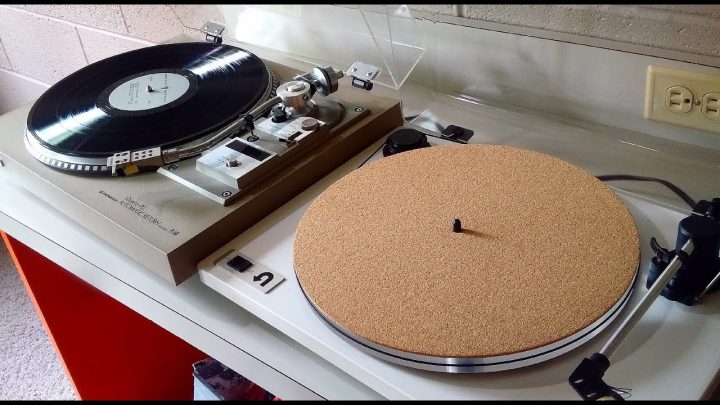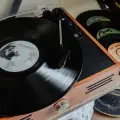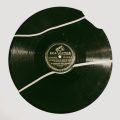Are you concerned that you might be sat on a whole stack load of money that is otherwise unredeemed? Do you suspect that some of your older records might be original? Do you simply want to know how to tell if a record is a first pressing?
Then look no further, for today we will be exploring six ways you can pinpoint to varying degrees of accuracy the precise (or imprecise) pressing of a record and the other extraneous details in the interim.
Table of Contents
- 1. Sleeve
- 2. Barcode
- 3. Catalog Number
- 4. Edition
- 5. Center Label
- 6. Dead Wax
- Final Tones
- FAQs How to Tell if a Record is a First Pressing

1. Sleeve
A good first thing to look out for in an original pressing is the state of the sleeve within which it is contained. First press albums from an older era of vinyl record collecting will, if used consistently, have been worn far more than a record in a later batch.
Vinyl records’ sleeves sure can take a beating and first pressings are no exception.
This is at a time when records were mass-produced far more than they are now, meaning that the record and the record sleeve would likely have been made from a far cheaper and flimsier material to minimize production costs.
2. Barcode
If you can see a barcode on the sleeve, then you likely are not in possession of a first press. Original pressings from before the 80s simply did not feature a barcode on the sleeve, period.
Likewise, it is worth paying attention to the stickers and label variations that are attached to the sleeve, whether to the sleeve itself or the plastic wrapping.
Those that attempt to market the album by drawing attention to one of its hits is likely a second pressing of a record that did not do well enough the first time around.
3. Catalog Number
This will be of the utmost significance to the more internet-savvy consumer, or perhaps simply to those with a keen interest in these kinds of logistics as evolved over time.
If you, indeed, have two copies of the same release derived from the same master copy, try comparing their respective catalog numbers. This number can usually be found around the center of the center label, featuring a few characters followed by a series of numbers.
Once you have it, you can very easily use a database like Discogs to find your own catalog number and see whether your record is indeed a first pressing.
4. Edition
At this point, it can be of use to check the specific edition of the album, perhaps using the method above.
Through some process of exoticization gone utterly capitalistic, foreign copies of albums tend to fetch more when put up for sale, even if simply by their relative rarity.

Some of these foreign copies can, however, be worth less, owing to their having been sourced from backup master tapes as opposed to the genuine article, though the recent controversy regarding the Original Master Recordings label ought to teach us that nothing of this kind is truly sacred anyhow.
5. Center Label
In specific instances, the center label might even be marked a different way to signify that the pressing is indeed a first pressing of supposedly the best-sounding records.
Reprise, for example, will use a ‘tritone’ label to exhibit the record’s status as a first pressing, whereas all of their other center labels tend to be garbed in tan.
This might seem like an all too easy way to tell, but can be of the utmost significance in singling out a first pressing from a second or third pressing.
6. Dead Wax
This is likely where you will find what you desire, wherein the so-called ‘run-off groove’ of the record is inscribed with details about the pressing and the cutting lathe used in how vinyl records are made.
‘If it says “1_” it’s a first pressing. The letter usually reference to which lathe was used to cut the laquer. So 1A, 1B, 1C, 1D, 1E, 1F, 1G, 1H are all technically first pressings.’
Many of the large conglomerate record companies and manufacturers will use the same method, so it is certainly worth checking for the information that you seek even on your other records too.
Final Tones
So, there you have it!
Hopefully, your curiosity around first pressings has been satiated and you have returned back to daily life with some other extraneous knowledge.
Perhaps you did not already know what the dead wax of a record was, or maybe you did not know how much you could find about your record collection with only your catalog numbers and a discography database like Discogs.
Whatever the weather, enjoy it and be kind to one another!
FAQs How to Tell if a Record is a First Pressing
What is a first pressing of a record?
The first pressing of a record essentially refers to the first batch that a record was released. In order to understand this properly, it is important to consider the industrial manufacturing process involved in pressing records and releasing them out into the world. Each pressing will seek to rectify any of the faults in the previous batch, though it is not hard to see why the original of a popular but not so highly circulated album would fetch a fair sum at auction.
How do you tell what year record was pressed?
There a number of ways you can do this, each with varying levels of accuracy to the specific year: examining the sleeve for surface wear and tear; checking the sleeve for ‘hype stickers’ or barcodes; finding the catalog number and searching the Discogs database for specific info; checking the edition of the pressing; checking the center label for telltale signs that it is a first pressing; and examining the dead wax just outside the center label for information about the pressing and the lathe that cut it in the first place.





